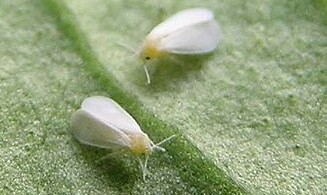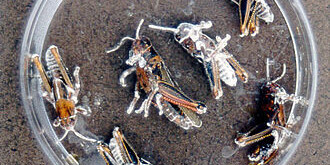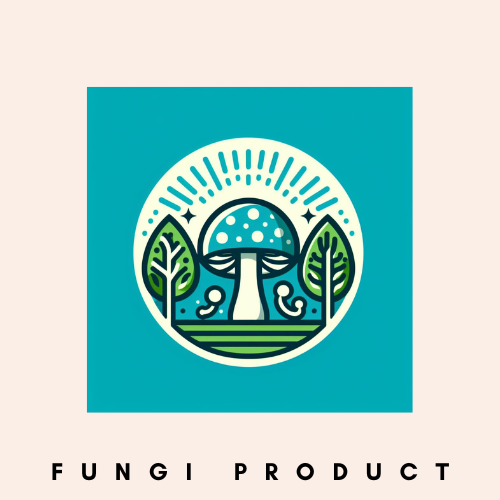Are you looking for a natural, sustainable way to protect your garden from pests without resorting to harmful chemicals? Enter fungi—a powerful ally in pest control that works with nature, not against it. Certain types of fungi can target and neutralize common garden pests while promoting healthier soil and plant growth. In this article, we’ll explore how these eco-friendly solutions can help you maintain a vibrant, thriving garden with minimal environmental impact.
Fungi are nature’s hidden champions, vital for keeping ecosystems balanced. They break down organic matter, recycle nutrients, and help plants absorb water and nutrients through networks. Mycorrhizal fungi even form partnerships with plants, boosting their growth and resilience.
Historically, fungi have been part of agriculture’s toolbox long before synthetic solutions came into play. Ancient civilizations used fungi for crop cultivation and soil health, tapping into their natural powers to enhance yields and control pests. This knowledge was often passed down through generations, showing the trusted place fungi held in farming communities.
The diversity of fungi is astounding. There are fungi that glow in the dark, others that shoot spores at incredible speeds, and some that can communicate through underground networks. This vast diversity means there’s a specific fungus catered to almost every niche in the ecosystem, including pest control.
Symbiotic relationships are where the magic happens. When fungi partner with plants, they create mutual benefits. The fungi get sugars from the plant, and in return, they deliver nutrients and water, boost plant immunity, and sometimes ward off harmful pests. This cooperation is vital for healthy ecosystems and thriving gardens alike.
How Fungi Contribute to Sustainable Pest Control
Fungi offer a natural and effective solution in the battle against garden pests. Their biological efficiency is remarkable, providing an alternative to harsh chemicals that often harm more than just the targeted pests. Certain fungi, like entomopathogenic fungi, specifically target and infect pest insects, ultimately eliminating them without harming beneficial insects or plants.
The way these fungi work is fascinating. Once the fungal spores come into contact with the pest, they germinate, penetrate the pest’s exoskeleton, and proliferate inside the host, with other words they break through the pest’s outer shell and multiply inside it.
This process eventually kills the pest while ensuring minimal impact on the surrounding environment. This is a perfect example of using nature’s processes for our advantage.
Choosing fungi over chemicals means fewer chemicals leeching into our soil and waterways, reducing environmental pollution. These natural warriors are eliminating pests and this way contribute to the soil health, creating a win-win scenario for gardens.
Fungi have already shown real success in pest control. Take the whitefly, a common garden pest—fungi like Beauveria bassiana have been used effectively to manage whitefly populations without harming plants or the surrounding environment
The beauty of fungi-based pest control lies in its specificity and minimal side effects, offering gardeners a sustainable route to a healthier garden while harmonizing with nature’s rhythms.

Beauveria bassiana have been used effectively to manage whitefly
Implementing Fungi-Based Pest Control in Your Garden
Gardeners looking to tackle pest issues naturally should consider fungi as a viable option.
Not all fungi fit the bill for every garden pest, so identifying which pests are troubling your plants is the first step.
For those dealing with insects like aphids, beetles, or caterpillars, specific fungal species can help. Beauveria bassiana and Metarhizium anisopliae, for instance, are popular choices known for their effectiveness against a wide range of insect pests.
When choosing fungi for your garden, consider not only the pest but also the climate and environment of your garden, as different fungi thrive under different conditions.
Using fungi-based solutions is simpler than you might think. Typically, it involves spraying a solution containing fungal spores onto the affected plants and soil. For the best results, it’s important to follow the manufacturer’s instructions or consult expert advice to ensure proper and effective application.
Complementing fungi-based methods with other natural pest control techniques can enhance results and keep your garden healthy.
Companion planting involves growing certain plants together that naturally repel pests or attract beneficial insects. For example, marigolds can deter harmful insects, while plants like dill attract predatory insects that feed on pests. Introducing beneficial insects, like ladybugs or predatory wasps, can also help control pest populations. When combined with fungi-based solutions, these methods create a well-rounded, eco-friendly approach to garden pest management
Incorporating fungi into your pest management strategy not only helps control unwanted pests but also promotes a healthier garden ecosystem. By combining fungi-based solutions with companion planting and beneficial insects, you can create a sustainable and effective approach to gardening. Embracing these natural methods fosters biodiversity, reduces chemical use, and ultimately leads to a thriving garden. Explore the potential of fungi and take a step towards a healthier, more vibrant garden today!

Effect of the Beauveria Bassiana on insects like these grashoppers
Future Prospects and Challenges in Fungal Pest Control
The future of fungi-based pest control looks promising as researchers continue to explore and expand on their potential to transform agriculture. Advanced research is pushing the boundaries of how we utilize these fascinating organisms, potentially leading to new and more effective fungal strains tailored for specific pests.
While the benefits are substantial, challenges do exist. The complexity of fungi ecology means that not all fungi will work in every situation or climate. There’s also the need to balance the introduction of fungi so they don’t disrupt existing ecosystems.
Legal frameworks and regulations can impact how home gardeners can use fungi. It’s important to stay informed about what’s allowed in your area and consider sourcing fungi from reputable companies that adhere to these guidelines.
Looking forward, integrating fungi into a broader pest management strategy represents a significant step towards sustainable gardening. By combining these fungal solutions with other eco-friendly practices, gardeners can cultivate thriving landscapes that are in tune with nature.
Explore the potential of fungi and take a step towards a healthier, more vibrant garden today!

André Raymond
